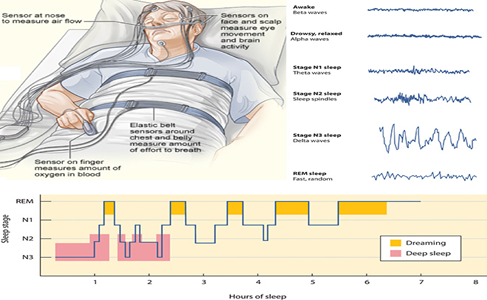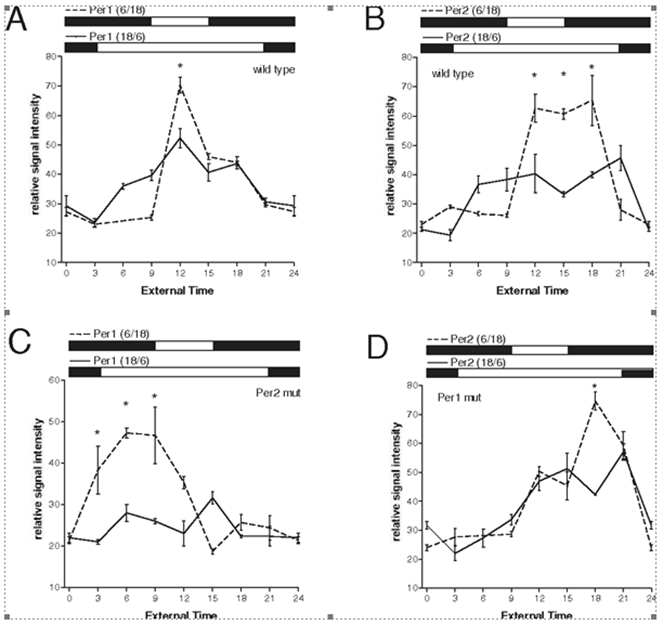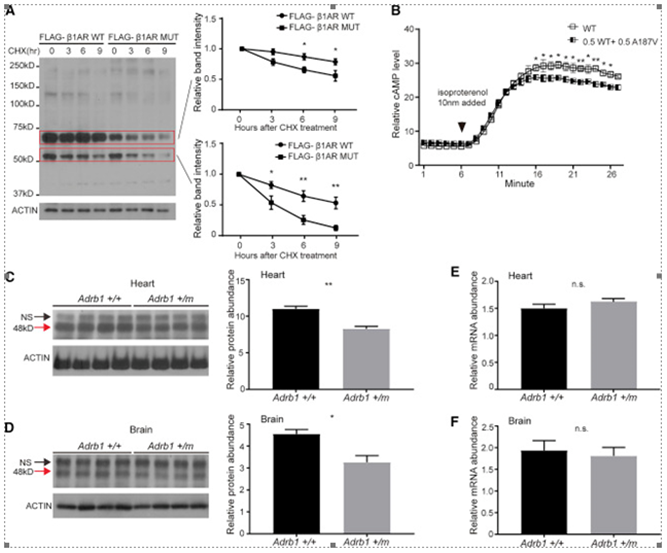Research Article
The Role of Genetic Mutations on Genes PER2, DEC2, ADRB1 in Bio-Psychological Sex Insomnia Disorder
Medical Genetics, Stem cell research center and specialized mother of blood purification, Boston Children's Hospital, USA.
*Corresponding Author: Shahin Asadi, Medical Genetics, Stem cell research center and specialized mother of blood purification, Boston Children's Hospital, USA.
Citation: Asadi S, S.M.R Miremadi (2023). The Role of Genetic Mutations on Genes PER2, DEC2, ADRB1 in Bio-Psychological Sex Insomnia Disorder Journal of Clinical Psychology and Mental Health, BRS Publishers. 2(1); DOI: 10.59657/2993-0227.brs.23.009
Copyright: © 2023 Shahin Asadi, this is an open-access article distributed under the terms of the Creative Commons Attribution License, which permits unrestricted use, distribution, and reproduction in any medium, provided the original author and source are credited.
Received: July 11, 2023 | Accepted: July 26, 2023 | Published: July 31, 2023
Abstract
Sexsomnia, also known as sleep sex, is a type of sleep disorder known as parasomnia. Parasomnias refer to unusual sensations and behaviors, such as sleepwalking, that people may experience during sleep. In the case of sex, people perform sexual behaviors such as masturbation, sexual movements, sexual assault, or initiating sex with another person. Although their eyes may be open and they may make sexual sounds, they are asleep during these activities and are unaware of their behavior upon awakening. Research on the causes of sexual insomnia is limited, but experts have found that it is associated with a wide range of underlying conditions and risk factors, including: other parasomnias, such as sleepwalking and REM behavior disorder, obstructive sleep apnea, seizures sleep disorders, Kline-Lewin syndrome, chronic insomnia, restless legs syndrome, narcolepsy, persistent sexual arousal syndrome, sleep-related disorders, nocturnal psychotic disorders, teeth grinding.
Keywords: sexsomnia; psychological disorder; parasomnia; genetic mutation.
Introduction
Overview of Sexual Insomnia Disorder
Sexsomnia, also known as sleep sex, is a type of sleep disorder known as parasomnia. Parasomnias refer to unusual sensations and behaviors, such as sleepwalking, that people may experience during sleep. In the case of sex, people perform sexual behaviors such as masturbation, sexual movements, sexual assault, or initiating sex with another person. Although their eyes may be open and they may make sexual sounds, they are asleep during these activities and are unaware of their behavior upon awakening [1]. It is difficult for experts to estimate how many people suffer from sex somnia. This disorder can occur unexpectedly and the person may not know they are experiencing it unless someone else notices its effects. However, nearly 8 percent of people in a sleep center showed symptoms of the disorder [1]. Somniasex can cause significant embarrassment and discomfort for those who experience it. However, treatment may depend on the underlying cause of the parasomnias, and may include the use of medications or lifestyle changes [1].
Symptoms of Sexual Insomnia Disorder
The symptoms of sexual insomnia vary depending on the person, but the main feature of this parasomnia is that a person shows sexual behaviors while asleep that he is unaware of and unable to control. These behaviors can include: masturbation, fondling, sexual sounds, sexual movements, initiation of sexual activities, sexual aggression, and sexual assault [2].
Sexsomnias can occur alongside other parasomnias, including sleepwalking and sleeptalking. The disorder appears to be more common in men than women, possibly up to three times more often. Masturbation is the most common behavior that occurs in women with sex somnia [2].
In addition to sexual behaviors, signs that someone is acting under the influence of sexual parasomnias include: unresponsiveness or minimal responsiveness to conversation or environment, unusual sexual reactions or aggression, inability to wake up, or difficulty waking up., there is no memory of their sexual behavior after waking up [2]. Nocturnal discharges, commonly called "wet dreams," are not the same as sexual insomnia. Nocturnal secretions are considered a natural part of adolescent male development, and adult men also experience it. However, some people with sex somnia may mistake their condition for nocturnal discharge if their behavior is not observed by anyone else [2].
Etiology of Sexual Insomnia Disorder
Research on the causes of sexual insomnia is limited, but experts have found that it is associated with a wide range of underlying conditions and risk factors, including: other parasomnias, such as sleepwalking and REM behavior disorder, obstructive sleep apnea, seizures sleep disorders, Kline-Lewin syndrome, chronic insomnia, restless legs syndrome, narcolepsy, persistent sexual arousal syndrome, sleep-related disorders, nocturnal psychotic disorders, teeth grinding [3]. Parasomnias and Kline-Lewin syndrome are the most common causes of this disorder. However, intercourse seems to be closely related to temporal and frontal convulsions [3]. Not all sexual insomnia can be related to an underlying medical cause. Some cases appear to be caused by environmental or lifestyle factors. These triggers may also trigger the onset of puberty (puberty) in individuals with the underlying disorder. Commonly reported triggers include: drinking alcohol, past or current recreational drug use, stress or anxiety, sleep deprivation, depression, poor sleep hygiene, shift work. The triggers of sex somnia seem to be different in different people. If you experience these parasomnias, you may find that you have triggers that do not appear on this list [3].
Figure 1: Schematic of polysomnography.
Diagnosis of Sexual Insomnia Disorder
Most people who experience symptoms of sexual insomnia do not report them to their doctor or sleep specialist. Shame is a common factor among people with this disorder, but it's important to remember that sexsomnia is often treatable and medical professionals have your best interests at heart [4]. If you are concerned that you are experiencing these parasomnias, talking to a medical professional is the first step in diagnosis and treatment. Your doctor may recommend a recorded sleep study or video polysomnography to better understand your condition and underlying sleep-related causes. Depending on the results of your sleep study, other tests may be needed to determine if you have another sexually transmitted disease [4].

Figure 2: Schematic of the physiological mechanism of the PER2 gene in regulating the human sleep pattern.
Treatment Paths for Sexual Insomnia Disorder
Treatment of sex somnia depends on the underlying cause. For people whose sexual insomnia is related to other parasomnias, benzodiazepines may be helpful. Sexsomnias associated with other sleep disorders usually resolve with treatment of the underlying problem, such as using a continuous positive airway pressure (CPAP) machine or a mandibular advancement machine for obstructive sleep apnea. Cases of sexual intercourse caused by seizures respond well to treatment with anticonvulsants [5]. Because sexual dysfunction appears to be caused by a wide variety of conditions, your doctor may prescribe treatment options specific to your unique condition. They may also suggest that you make lifestyle changes to avoid triggers and take steps to ensure the safety of yourself and others at home until the condition is under control [5].
Dealing with Sexual Insomnia Disorder
Sex insomnia can be very uncomfortable for people with this disorder and the people in their lives. Since people with this parasomnia are unaware of their actions during sleep and do not have control over them, they may behave in a way that they would never prefer these activities or behaviors when awake. This can have serious and distressing effects on spousal satisfaction, as sexual insomnia may cause a person to become sexually aggressive or have sex with someone they would otherwise not want to had with sex.[6] Getting the right diagnosis and treatment is the first step in dealing with sexual insomnia. While many people feel ashamed about their condition, talking openly and honestly with people in their lives about diagnosis and treatment will help keep everyone safe. Counseling, both for people with sexual insomnia and for others, can help with the emotional toll of the disorder.[6] Because treatment for sex somnia may not be immediately effective, it is important to follow safety precautions when necessary. Depending on your circumstances, this may include: Sleeping in a separate room; Lock the bedroom doors; Avoidance of all known or possible triggers; Set motion alerts, especially those related to sleepwalking.
It is very important to observe sleep hygiene, which helps the person with parasomnias. Following a sleep schedule, winding down at the end of the day, and following a consistent sleep routine are all part of healthy sleep hygiene [7].
Materials and Methods
In this study, blood samples were taken from 60 people male suffering from Sexsomnia disorder, and 60 people male Health, and with their written consent, molecular genetic testing was performed to check the changes in these genes. Individual information (such as age, gender, medical history) was recorded. The subjects were selected after final diagnosis by a adult’s psychiatrist according to DSM-V criteria, signed a written consent for blood sampling, and filled out an interview form designed to understand the contribution of genetic influence.[2] cc of blood was taken from each person and in Falcons containing EDTA as an anticoagulant; It was poured and then the falcons were gently shaken to mix to prevent blood clots from forming. Finally, the samples were stored in a -20 ° C freezer to extract DNA from blood. Saturated salt method was used to extract genomic DNA from whole blood samples. After DNA extraction, its concentration must be determined so that a certain concentration of DNA is subjected to the PCR reaction. In this case, the concentration of DNA used is constantly maintained. Two methods are used to determine the concentration and quality of the extracted DNA.
- Spectrophotometric method.
- Electrophoresis method.
Spectrophotometry is a quantitative method and electrophoresis is a qualitative method. Molecular Real Time-PCR technique was used for this study. This technique is commonly used to examine different alleles of a gene in a population. The sequence diversity of the respective gene alleles creates different cleavage sites for the restriction enzymes, resulting in fragments of different lengths. Depending on the length of the DNA fragments obtained from the cut, the change in nucleotides can be detected. One of the advantages of this method is that it is fast and does not require a probe.
Table 1: Specifications of primers used in this study.
| Gene | Primer name | Primer Sequence (5' to 3') | Length (bp) | TM (°C) | Product length(bp) |
| PER2 | Forward | AGTCAGAATAAGAGGTGGCG | 20 | ||
| Reverse | TAATGATCATGGCAGCGTCG | 20 | 64 | 165 | |
| DEC2 | Forward | GTCCAATACTGGAATTCCTG | 20 | 64 | 195 |
| Reverse | AACGTTGGCATTCCAAGGAC | 20 | |||
| ADRB1 | Forward | CTGGACTTGAGGCCTTAGTT | 20 | 64 | 215 |
| Reverse | AATTGGCCACTGCGGTATGC | 20 |
Result
Figure 3: Schematic of the binding pattern of the PER2 mutant gene versus the pattern of the wild version of this gene along with the column diagram of the expression level of this gene with the Real-Time PCR technique.
Figure 4: Schematic of the DEC2 gene binding pattern and column diagram of the expression of this gene by Real-Time PCR technique.
Figure 5: Schematic of the binding pattern of the ADRB1 gene and the column diagram of the expression of this gene by Real-Time PCR technique.
Discussion
The symptoms of sexual insomnia vary depending on the person, but the main feature of this parasomnia is that a person shows sexual behaviors while asleep that he is unaware of and unable to control. These behaviors can include: masturbation, fondling, sexual sounds, sexual movements, initiation of sexual activities, sexual aggression, and sexual assault. Sexsomnias can occur alongside other parasomnias, including sleepwalking and sleep talking. The disorder appears to be more common in men than women, possibly up to three times more often. Masturbation is the most common behavior that occurs in women with sex somnia. Research on the causes of sexual insomnia is limited, but experts have found that it is associated with a wide range of underlying conditions and risk factors, including: other parasomnias, such as sleepwalking and REM behavior disorder, obstructive sleep apnea, seizures sleep disorders, Kline-Lewin syndrome, chronic insomnia, restless legs syndrome, narcolepsy, persistent sexual arousal syndrome, sleep-related disorders, nocturnal psychotic disorders, teeth grinding. Treatment of sexsomnia depends on the underlying cause. For people whose sexual insomnia is related to other parasomnias, benzodiazepines may be helpful. Sexsomnias associated with other sleep disorders usually resolve with treatment of the underlying problem, such as using a continuous positive airway pressure (CPAP) machine or a mandibular advancement machine for obstructive sleep apnea. Cases of sexual intercourse caused by seizures respond well to treatment with anticonvulsants [8,9,10].
According to the studies conducted on these three genes, it can be seen that these three genes play an important role in causing sex somnia and can be an influential factor even in the inheritance of these mutated genes to the children of the next generation. Therefore, it can be concluded that sleep patterns, including sexual dreams, are most likely under the genetic control of humans.
References
- Asadi S. (2022). Human Sleep Pathology Books (2 vol), Amidi Publications, Iran.
Publisher | Google Scholor - Singh, S., Kaur, H., Singh, S., & Khawaja, I. (2018). Parasomnias: A comprehensive review. Cureus, 10(12), e3807.
Publisher | Google Scholor - McCann, K. (2010,). Study finds that sexsomnia is common in sleep center patients. American Academy of Sleep Medicine.
Publisher | Google Scholor - Dubessy, A.-L., Leu-Semenescu, S., Attali, V., Maranci, J.-B., & Arnulf, I. (2017). Sexsomnia: A specialized non-rem parasomnia? Sleep, 40(2).
Publisher | Google Scholor - Gul, A., Yuruk, E., & Serefoglu, E. C. (2020). Frequency of nocturnal emissions and masturbation habits among virgin male religious teenagers. Revista Internacional De Andrologia, 18(1), 21–26.
Publisher | Google Scholor - Meng, X., Fan, L., Liu, J., Wang, T., Yang, J., & Ye, Z. (2013). Fresh semen quality in ejaculates produced by nocturnal emission in men with idiopathic anejaculation. Fertility and Sterility, 100(5), 1248–1252.
Publisher | Google Scholor - Wieckiewicz, M., & Winocur, E. (2020). Special issue: Sleep bruxism-The controversial sleep movement activity. Journal of Clinical Medicine, 9(3), 880.
Publisher | Google Scholor - Voges, B. R., Schmitt, F. C., House, P. M., Stodieck, S. R., & Schenck, C. H. (2019). Complex sexual behaviors during sleep as a manifestation of epilepsy: A case series. Sleep, 42(3), zsy233.
Publisher | Google Scholor - Khawaja, I. S., Hurwitz, T. D., & Schenck, C. H. (2017). Sleep-related abnormal sexual behaviors (sexsomnia) successfully treated with a mandibular advancement device: A case report. Journal of Clinical Sleep Medicine: JCSM: Official Publication of the American Academy of Sleep Medicine, 13(4), 627–628.
Publisher | Google Scholor - Drakatos, P., Marples, L., Muza, R., Higgins, S., & Leschziner, G. (2019). NREM parasomnias: A treatment approach based upon a retrospective case series of 512 patients. Sleep Medicine, 53, 181–188.
Publisher | Google Scholor


















